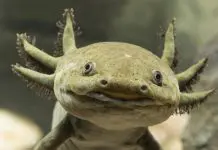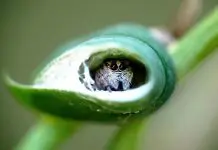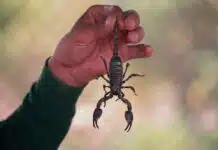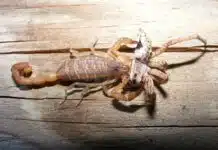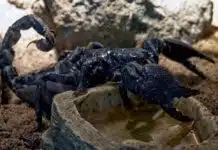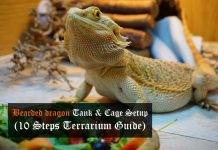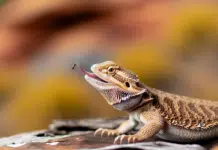Does axolotl make good pets?
They are definitely good pets to have. Just look at how cute they are. It is really therapeutic to watch them swim up and down the aquarium. They are totally harmless as they do not have sharp teeth. It doesn’t even hurt the slightest when feeding them with your bare hands. Furthermore, adult axolotls can go without food for days so they don’t have to be fed all the time.
Sounds like the perfect pet isn’t it?
But… Here’s the deal
Unlike typical salamanders, axolotls are fully aquatic creatures. They are also sensitive to certain water chemistry, light and strong water movements which makes taking care of them a lot more difficult than what it looks.
To facilitate a good habitat for your axolotl to strive in, you will have to spend a lot of time in setting up their home: from their tank setup to water temperature adjustments and chemistry levels to the different types of filters to use etc. Their aquarium housing alone can take you hours to set up. Nitrogen cycling of tank water can also take weeks.
Having an axolotl as a pet may look cool but the work and care required ain’t cool at all. It takes Effort! Taking care of axolotls is unlike taking care of exotics like arachnids, snakes or your usual typical pets like cats and dogs where housing setup is much more simpler.
Axolotls can really be sensitive even though they are considered the top of the food chain within their habitat.
So do you still think they are wonderful as pets?
Before you make a decision, let us help you understand more about axolotls, weigh their pros and cons to give you a better, unbiased take on axolotls.
Contents
Chapter 1: What is an Axolotl? Facts and Introduction to Axolotl
The Mexican axolotl or Ambystoma mexicanum is classified as a critically endangered species with their natural homes slowly getting destroyed due to both man-made and natural factors.
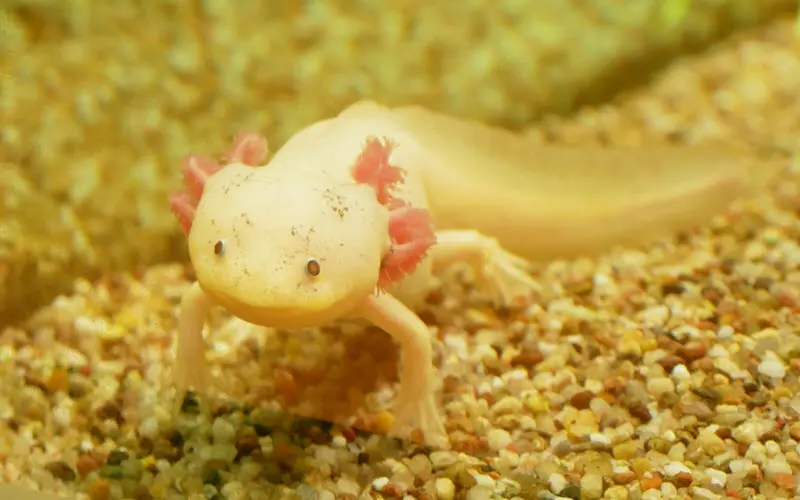
Their species belong to the line of salamander family and are often mistaken as a “fish with legs”. This is because they fail to fully metamorphosize causing them to keep their larvae characteristics such as a fin and tail. They have to remain underwater even though they develop lungs, hands, and feet.
This special trait allows them to come up to the surface for air. But make no mistake as they are still considered aquatic creatures and cannot stay on land.
Their unique feature is their fern-like gills that are mesmerizing to look at. With their features being very similar to a dragon, they are also often referred to as the “water dragon”.
Axolotl Characteristics
How big can axolotl grow?
They can grow into a size of between 10 to 12 inches (25cm to 30cm) long or maybe more. Homegrown axolotls rarely grow bigger than that.
How much do axolotls weigh?
For a male homegrown axolotl, he can weigh approximately up to between 120g and 130g.
While a female homegrown axolotl can weigh up to 170g and onwards.
Lifespan of axolotl
Axolotl’s lifespan is approximately 20 years. Homegrown axolotls, if well taken care of can live for about 10 years.
Axolotl Diet
Never underestimate this cute being. Within its habitat, this sea monster is actually at the highest along the food chain. Axolotls eat anything from fishes to insects to worms or everything they can fit within their mouths.
The coolest thing about the axolotl?
It is their healing factor. Yes, you heard it right. Just like Deadpool in the movies, axolotl can regrow entire limb or body parts just like before. This is also the reason why they are the most studied species on the planet.
Chapter 2: the Pros and Cons of keeping an axolotl as a pet
Reasons to get an axolotl (Pros):
#1 Axolotls are cute and fascinating creatures.
These beautiful creatures are a creation of wonder and awe. Just by looking at them will turn any bad day into an amusing and happy one.
#2 Safe to handle. Their bite really doesn’t hurt.
Axolotl has shallow teeth. Its primary function is not to bite but rather to grip on food that is slippery like an earthworm for example. Hence, you can even feed them with your bare hands. But do be careful with that as it might stress them out.
#3 They don’t need much attention and can live perfectly in solitary.
Axolotls are really independent. They do not need much attention or affection like dogs or cat. They also do not need any company sharing the same tank.
#4 Their food source is relatively cheap so upkeep for food is not a problem.
They eat almost anything. But worms are usually their common diet. They cost relatively cheap compared to food for many other pets.
#5 Food source can also be cultivated.
Earthworms or nightcrawlers can be self-cultivated. Along with guppies or ghost shrimps. But that may require time and additional effort to set them up.
#6 Adult axolotls don’t have to be fed every day
Axolotls can go on without food for a few days. So it won’t be necessary to feed them every day. Some owners also add in live small fishes as snacks for axolotls to pick on them whenever they felt hungry.
*Note that adding live fishes should only be from the ones you self-cultivate to avoid parasite or diseases.
Reasons to consider before getting an axolotl (Cons):
#1 Axolotls are sensitive to many things –
They tend to get stressed easily. Light, water temperature, toxicity, and flow are attributes to axolotl stress. So it is very important to make sure housing is set up correctly.
#2 The setup is quite technical and cost slightly higher than many other pets
You will need the right type of substrate, plants, filters to keep axolotls healthy and happy. All these may come at a higher cost compared to keeping fishes like goldfish.
#3 Weekly water changes have to be carried out
Weekly water testing is also a best practice to monitor water toxicity levels after every change. This ensures levels are not beyond what an axolotl can take.
#4 Nitrogen cycle requires experience and takes weeks to complete
Nitrogen cycle helps keep water toxicity levels low. This helps good bacteria to grow hence helps reduce the number of times required to change water.
#5 Food has to be prepared or cultivated
It is better to feed axolotl manually to avoid any implications. It is advisable to prepare the food for your axolotl to avoid problems like impaction or overeating.
Also, live food is great for axolotls but will need time and experience to cultivate.
From here you can see that having a pet like axolotls come with many technicalities. Even after having them the trouble of water changing can turn many people off.
Not to mention that if they fall sick, it is not easy to find a vet who is experienced in this line of species. So get ready to do almost everything on your own.
In the next section, we will list out some of the axolotl housing needs to give you an overall idea of what is required.
This will help you manage your expectations and give you a good idea on whether they are really good pets for you
Chapter 3: Axolotl living – What is required?
#1 What is the right aquarium tank size
1 adult axolotl to a 20-gallon tank. 2 axolotls to a 40-gallon tank and so on. This allows ample space for the axolotl to feel free and at ease.
Recommended aquariums:
#2 Water temperature
Ideal temperatures are between 16°C and 18°C or 60°F to 64°F. Anything warmer will make your axolotls grow sick.
Colder is much better than warmer. Going below 16°C only make them eat lesser and move lesser.
To make sure you get the right temperatures, good and reliable thermometers must be used to get the correct reading.
Here are some thermometers that will get the job done.
#1 Zacro LCD Digital Aquarium Thermometer
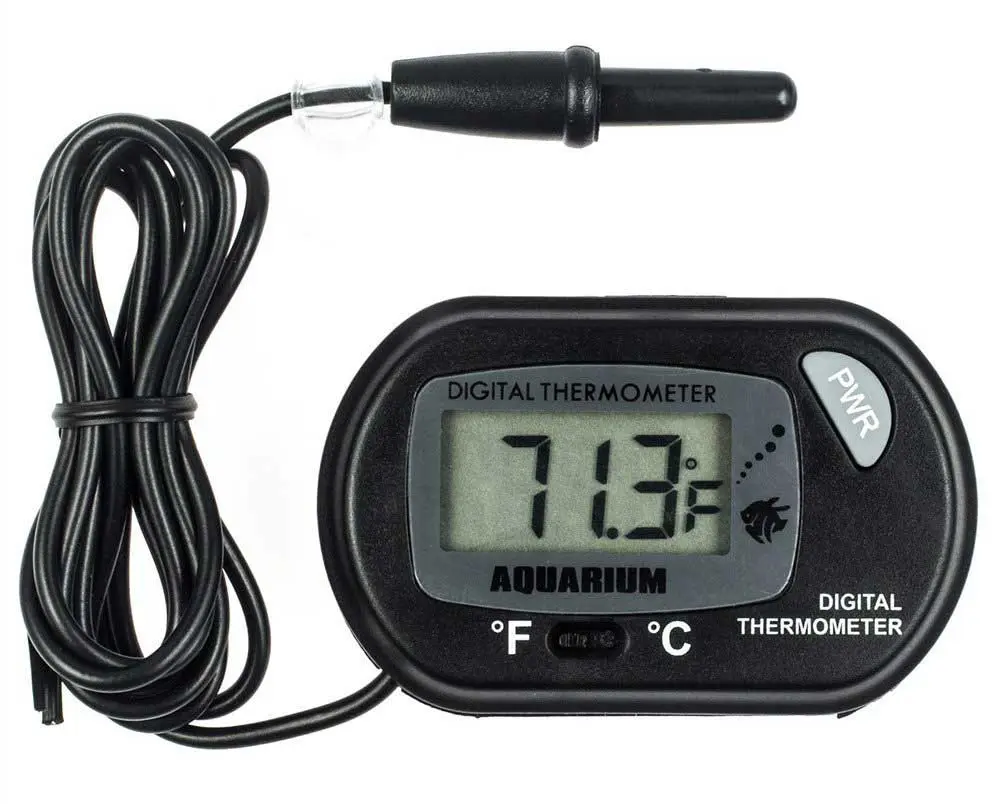
This digital thermometer provides highly accurate temperature readings. It is so easy to setup. All you need is to stick the thermometer outside of the aquarium and insert the sensor probe into the water. You should get your readings in matter of seconds.
Check out the Zacro LCD digital thermometer here.
#2 Marina Floating Thermometer
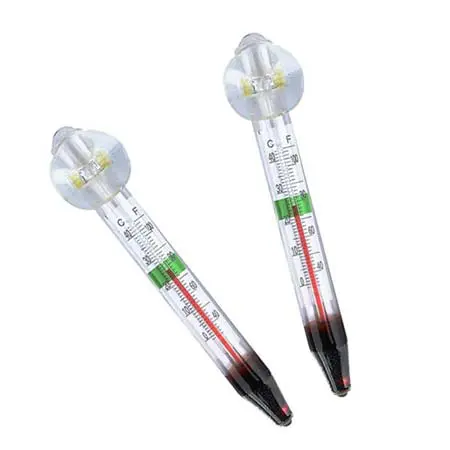
This is a classic thermometer that provides an accurate temperature reading. They do not rely on batteries so never worry when to replace their batteries. To set it up, simply submerge it into the tank’s water and stick them on the front of the tank.
Find out more about the Marina Floating thermometer here.
Do take note that classic thermometer may require some tuning to get the most accurate readings. Take a look at the steps for thermometer tuning in our other guide here.
How to regulate the tank’s temperature
If your tank’s temperature is too hot, make sure you lower them down using the following methods:
1. Switch to a screen lid cover. Here are some good examples of a screen lid.
2. Place aquarium fans above the surface of the tank. You can check out a list of aquarium fans here.
3. Using a frozen water bottle. Check out the “ice-bottle method” here.
4. Lastly, you can opt for a chiller if you have a large tank. This Hamilton Technology Aquarium Chiller works very well for 100 to 120-gallon aquariums.
Most people might be wondering if using a chiller actually waste a lot of electricity. However, that is not the case, in fact, most owners save more by turning off their AC and switching to a chiller instead.
Now that we have covered lowering your aquarium temperature, what about increasing it?
To increase your water temperature, there is no better way than using a heater. You can check out this submersible aquarium heater with thermostat to regulate temperature automatically.
#3 Water toxicity
For any freshwater aquarium, ammonia and nitrites are deadly regardless whether is it for axolotl or not.
Small quantities of nitrates are still acceptable to keep the nitrogen cycle going. PH that is too high or too low also post as a problem for axolotls.
The ideal figures:
- Acceptable PH levels: 6.5 to around 8.0
- Ideal PH levels: 7.4 to 7.6
- Ammonia Levels: 0ppm (Anything over 1ppm can kill your axolotl)
- Nitrite level: 0ppm (Same as ammonia, 1ppm or more is deadly)
- Nitrate levels: 2ppm to 40ppm (anything higher is toxic. 20% water changes to stop this level rising to toxic levels)
In order to accurately measure water toxicity, the right tools must be used. The following tool kits are essential to getting the right measurements:
#1 Seachem Prime Fresh and Saltwater Conditioner
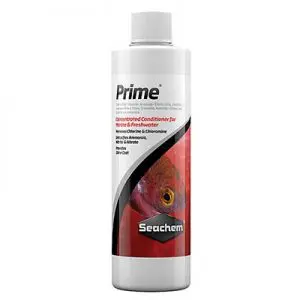
If you plan to cycle your water, a dechlorinator like prime is essential. Use this to help remove many other traces of metal that can be found in water as they travel through pipes.
Get your dechlorinator from Amazon here.
#2 API Freshwater master test kit
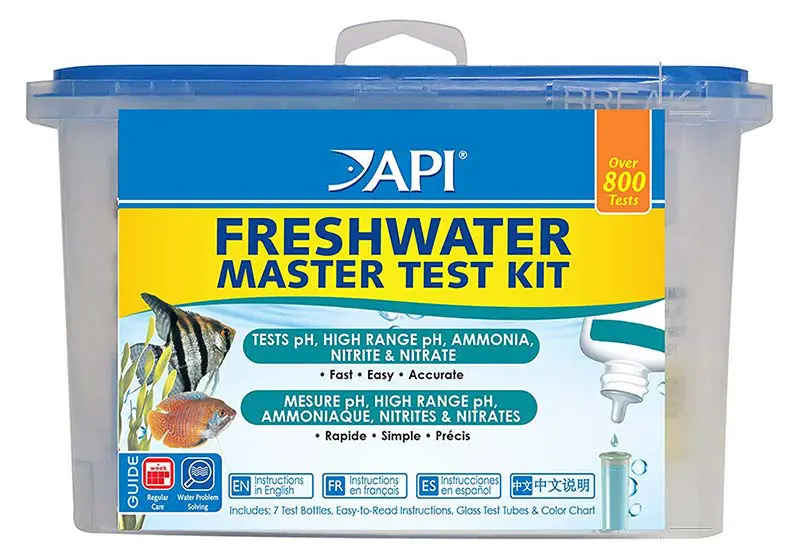
This master kit is used to test your water’s chemistry. The amount of PH, ammonia, Nitrate and Nitrite levels will be accurately measured if you carry out the steps correctly. Learn how to test your water chemistry here.
Get your API Freshwater Master test kit from Amazon here.
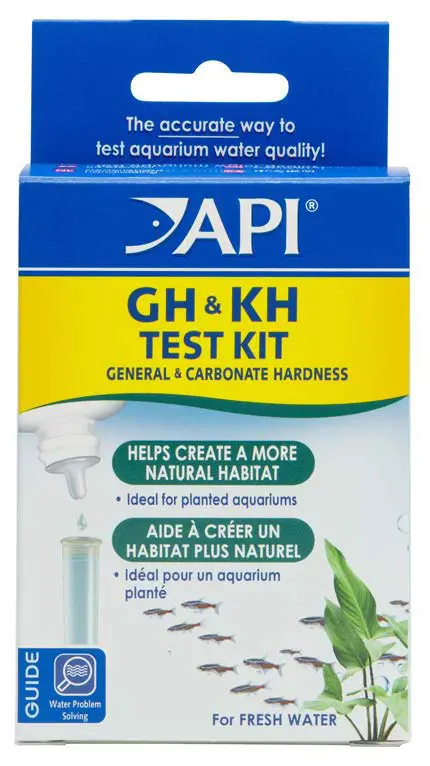
This test kit is to test water hardness. Water that is too hard or too soft might not be good for axolotls. Learn how to test water hardness here.
Get your Water hardness test kit here.
#4 Light
Axolotl prefers an environment in darker areas. Wild axolotl lives in caves and does not have eyelids to protect their eyes from bright light. The best practice is to remove any LED lighting from the tank as it also increases the temperature of your water. Room light or natural light is good enough.
#5 Substrates
Substrates are what you put at your tank bed. Be very careful as you can only use fine sand or nothing at all. Using anything like pebbles or stones that are big may result in axolotl ingesting them during their meals. It will get stuck in their body and can cause impaction.
So either don’t use any substrate or use very fine aquarium sand. This way it will not cause impactions.
Here are 2 types of fine aquarium sand that are used by axolotl owners:
#6 Plants and hideouts
Plants and decorative items are great hideouts for axolotls. When they feel stress there are areas away from light where they can go back to hiding. The only thing to watch out for are sharp decoration items being used as hideouts. Cuts and injuries are among the few causes that may lead to axolotls death. So be careful.
Plants you select have to be able to still grow in low lighting conditions. Some examples are:
Some potential hideout and decorations can be:
To enhance the looks of your aquarium you can also use:
So what do you think now that you see so many things are required to keep axolotls are pets? Are they still the pet you want?
Understand that what you see above is only the tip of an iceberg. To really find out how to take care of an axolotl, you have to take a look at our comprehensive axolotl care guide here.
Or let’s move on to the next section to see some of the cost required to set up an axolotl tank below.
Chapter 4: Average cost to upkeep an axolotl as a pet
Let us see how much is the total cost that is required to set up a full aquarium for an adult axolotl. Items required we will just take them from Amazon to make everything easier for you.
#1 20 gallon aquarium tank
A simple 20-gallon aquarium tank can cost you between $60 to $75.
#2 Filters
Filters I recommend are the “hang on back” (HOB) filters but they can cost slightly more than sponge filters.
To make this fair we will compare prices of all types of filters that are suitable for axolotls
- Sponge filter: $6.95 for the filter and $10.36 for an air pump – Total $17.31
- Hang on back filter: $25.99
- Canister filter: $89
#3 Plants
Java ferns can cost between $10 to $20 on Amazon. While Anubis can cost between $8 to $15 depending on size
#4 Hideout
PVC T-pipe cost about $10.49 while terra cotta pots cost about $7 to $10 dollars depending on size
#5 Thermometer
- Digital thermometer: $6.99
- Marina thermometer: $3.99
#6 Water test kit
API freshwater test kit will cost about $25
#7 Axolotl food
- Pellet food cost between $5 to $8
- Red wigglers (1000 pack) cost about $30
#8 Other not compulsory but “good to have” items
- Turkey baster: $3.95
- Long aquarium plant tweezers: $9
If we are conservative and choose the cheapest of all our choices, the Total Cost can be about $146. This cost is just an estimate and will fluctuate depending on your choices.
This will be roughly the amount of money to kick-start an axolotl tank. You will also have to consider the recurring cost that may incur from month to month. Things like filters and food will need to be replenished.
With all this in mind, let’s finally see how axolotl fare as pets.
Chapter 5: Axolotl Rating as pets
We will rate the axolotls base on the 3 most important considerations for any pet owner. They are:
#1 Cost: 0.5/1
Axolotl setup can be quite costly due to some necessary items required for your aquarium. They also have ongoing recurring cost such as food and filter media. But the good thing is that most of these items are relatively cheap so it should not take up too much budget.
#2 Maintenance: 0.5/1
In terms of maintaining axolotl everyday life, it can be quite tedious. Things like water changes, tank cleaning, and preparation of their food are some of the things you have to be ready to do for them. Especially if they fall sick, you will need to perform certain treatment and diagnostics to help recover.
#3 Handling: 1/1
Axolotls are relatively easy to handle. And as they do not bite and are not dangerous at all. This allows us to give it a max rating for handling. However, do note that axolotls should not be handled often with bare hands as they can get stressed out easily. Frequently, touching them will also remove the protective layer over their skin. If you like to touch them, you can start slow by feeding them with your bare hands first.
The axolotl has a Total Rating of 2 out of 3 making it a fairly good pet for new owners.
What’s the Bottom line?
Axolotls are not for everyone. If you really like to have an axolotl as a pet, it is important to know what you are doing before getting one.
Make sure you read up on axolotl care guide for an overview of axolotl habits. Remember, they are classified as critically endangered species.
Hence, it is really up to all of us to be responsible people and only get them if you are seriously committed.
Here is a list of resources that you should familiarise yourself with before getting an axolotl:
What do you think?
Are axolotls still great pets? Let us know in your comments below.

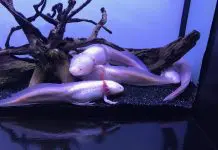

![Sick Axolotl, Fungus, Stress Symptoms [Axolotl Illness Guide 2025] Axolotl fungus](https://exopetguides.com/wp-content/uploads/2018/06/axolotl-218x150.jpg.webp)
